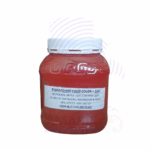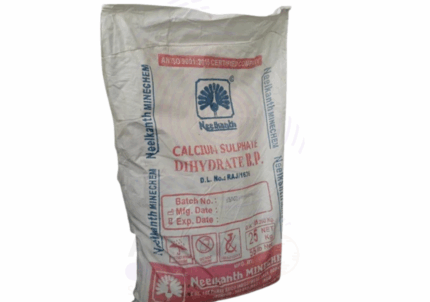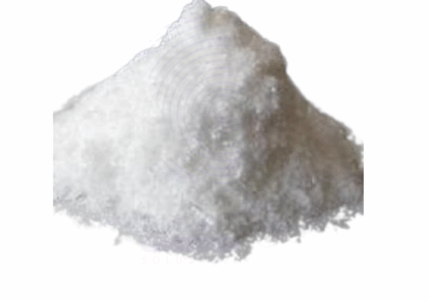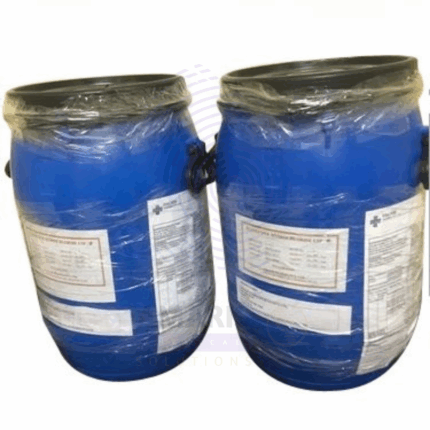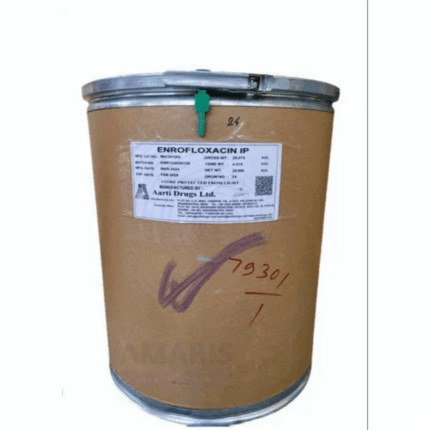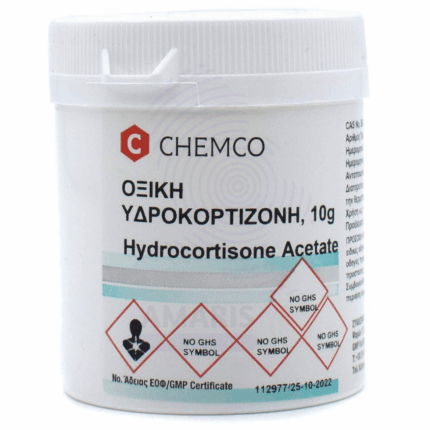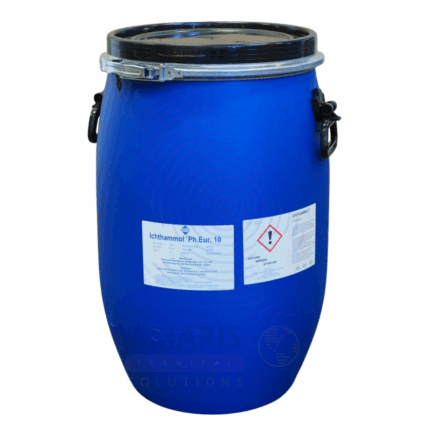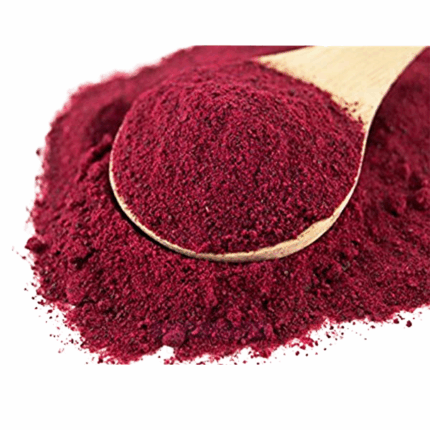Back to products


Avobenzone
$ 4.00 Original price was: $ 4.00.$ 3.52Current price is: $ 3.52.
Atropine Sulphate
Whatsapp Order
Atropine Sulphate is a crystalline, water-soluble alkaloid salt derived from the belladonna plant (Atropa belladonna) and other Solanaceae family members. It is a tropane alkaloid with potent anticholinergic properties, widely used in medicine for its ability to block muscarinic acetylcholine receptors. Atropine Sulphate is employed in ophthalmology, emergency medicine, and anesthesia for its effects on the eyes, heart, and smooth muscles. It acts by inhibiting parasympathetic nerve impulses, resulting in pupil dilation, increased heart rate, and reduced gland secretions.
Description
Table of Contents
Toggle
Atropine Sulphate
Primary Uses
- Medical & Pharmaceutical Applications
- Used as a mydriatic agent to dilate pupils during eye examinations and surgeries.
- Administered to treat bradycardia (slow heart rate) during cardiac emergencies by increasing heart rate.
- Utilized as an antidote to counteract organophosphate poisoning (e.g., insecticide poisoning) by blocking excessive acetylcholine effects.
- Employed preoperatively to reduce salivation and respiratory secretions during anesthesia.
- Used to relieve smooth muscle spasms in gastrointestinal, urinary, and biliary tracts (antispasmodic effects).
- Applied in ophthalmology for uveitis treatment and cycloplegia (paralysis of ciliary muscles).
- Research and Diagnostic Uses
- Used in pharmacological research to study parasympathetic nervous system functions and receptor activity.
Secondary Uses
- Veterinary Medicine
- Administered to animals for similar indications such as treating bradycardia or as an antispasmodic.
- Cosmetics
- Rarely used in topical preparations for pupil dilation in certain clinical cosmetics procedures under strict supervision.
- Laboratory Reagent
- Used as a reagent in chemical and biochemical assays.
KEY PRODUCT FEATURES
1. Basic Identification Attributes
- Chemical Name (IUPAC): (8-Methyl-8-azabicyclo[3.2.1]oct-3-yl) 3-hydroxy-2-phenylpropanoate sulfate (1:1)
- Common/Trade Name: Atropine Sulphate
- CAS Number: 591-50-4
- HS Code: 2933.99.90
- Molecular Formula: C₁₇H₂₃NO₃·H₂SO₄
- Synonyms:
- Atropine sulfate salt
- (±)-Atropine sulfate
- Belladonna alkaloid
2. Physical & Chemical Properties
- Physical State: White or slightly yellow crystalline powder or granules
- Color & Odor: White to off-white, odorless or faint odor
- Melting Point: 230–235 °C (decomposes)
- Density: Approximately 1.7 g/cm³
- Solubility: Highly soluble in water; soluble in alcohol and slightly soluble in chloroform
- pH Level: Slightly acidic aqueous solutions
- Vapor Pressure: Negligible
- Flash Point: Not flammable
- Autoignition Temperature: N/A
3. Safety & Hazard Attributes
- Hazard Class (GHS): Toxic if swallowed (Category 3), harmful if inhaled or in contact with skin
- NFPA Ratings: Health 3, Flammability 1, Reactivity 0
- Exposure Limits: No specific OSHA/ACGIH limits, but use with caution due to toxicity
- Reactivity: Stable under normal conditions; sensitive to strong acids, bases, and light degradation
4. Storage & Handling Attributes
- Storage Conditions: Store in a cool, dry, and dark place in tightly closed containers
- Container Type: Amber glass or high-density polyethylene containers to avoid light exposure
- Shelf Life: Typically 2–3 years under proper storage
- Special Handling: Use gloves, avoid inhalation or ingestion, and prevent skin/eye contact
5. Regulatory & Compliance Attributes
- FDA (USA): Approved pharmaceutical ingredient with regulated dosage and use
- EMA (EU): Approved and controlled as a medicinal product
- JECFA: Listed with established acceptable daily intake for medical uses
- Hazard Symbols (GHS): Toxic health hazard symbol
- Transportation Restrictions: Classified as a hazardous pharmaceutical material
- Waste Disposal: Dispose of as hazardous pharmaceutical waste according to local regulations
6. Environmental & Health Impact
- Ecotoxicity: Potentially toxic to aquatic life in high concentrations
- Persistence: Biodegradable but should be disposed of carefully to avoid environmental contamination
- Carcinogenicity/Mutagenicity: Not classified as carcinogenic
- Biodegradability: Biodegradable under normal environmental conditions
SAFETY HANDLING PRECAUTIONS
Safety Handling Precautions
- PPE: Wear gloves, lab coat, safety goggles, and respiratory protection when handling powders or solutions.
- Handling: Work in well-ventilated areas or fume hoods; avoid inhalation, ingestion, and skin/eye contact.
- Storage: Store away from light, moisture, and incompatible substances; keep tightly sealed.
- Hygiene: Wash hands thoroughly after use; do not eat, drink, or smoke in handling areas.
- Spill Response: Use absorbent materials and dispose of as hazardous waste.
First Aid Measures
- Inhalation: Move affected person to fresh air immediately; seek medical attention if breathing difficulty occurs.
- Skin Contact: Wash skin thoroughly with soap and water; remove contaminated clothing; seek medical advice if irritation persists.
- Eye Contact: Rinse eyes with water for at least 15 minutes; seek medical attention immediately.
- Ingestion: Do NOT induce vomiting; rinse mouth and seek emergency medical care immediately.
Firefighting Measures
- Fire Hazards: Not highly flammable but may decompose producing toxic fumes if heated strongly.
- Extinguishing Media: Use water spray, foam, dry chemical, or carbon dioxide extinguishers.
- Special Precautions: Firefighters should wear full protective gear and self-contained breathing apparatus (SCBA).
Related products
Calcium Sulphate Dihydrate
Calcium Sulphate Dihydrate, commonly known as gypsum, is a naturally occurring mineral widely used in agriculture, construction, and various industrial processes. It appears as a white or slightly translucent crystalline powder with moderate solubility in water. The compound is primarily used as a soil conditioner to improve soil structure and supply calcium and sulfur nutrients essential for plant growth. It also finds applications in the manufacture of plaster, cement, and as a filler in various products.
Carbocisteine AJI 92
Carbocisteine AJI 92 is a high-purity pharmaceutical-grade amino acid derivative, chemically known as S-carboxymethyl-L-cysteine. It is a white to off-white crystalline powder with a slightly sulfurous odor and is freely soluble in water. Carbocisteine functions primarily as a mucolytic agent—reducing the viscosity of mucus and promoting expectoration in respiratory tract infections. The "AJI 92" specification refers to its compliance with the purity standards established by Ajinomoto's amino acid quality benchmarks, ensuring it meets stringent pharmaceutical-grade quality control for active pharmaceutical ingredients (APIs). It is widely used in oral syrups, tablets, and granules in both human and veterinary medicine.
Dicyclomine Hydrochloride
Dicyclomine Hydrochloride is an anticholinergic and antispasmodic agent used primarily to relieve smooth muscle spasms in the gastrointestinal tract. It works by blocking muscarinic receptors, thereby reducing muscle contractions and spasms, which helps alleviate symptoms of irritable bowel syndrome (IBS) and other functional bowel disorders. It is commonly available in oral tablets, capsules, and injectable formulations.
Enrofloxacin Hydrochloride
Enrofloxacin Hydrochloride is a broad-spectrum fluoroquinolone antibiotic used primarily in veterinary medicine. It is the hydrochloride salt of enrofloxacin, offering enhanced solubility and bioavailability. Enrofloxacin inhibits bacterial DNA gyrase and topoisomerase IV, disrupting DNA replication in Gram-negative and Gram-positive organisms as well as some Mycoplasma species. It is available as a white to off-white crystalline powder, used in injectable, oral, and topical formulations designed for livestock, companion animals, and aquatic species.
Hydrocortisone Acetate
Hydrocortisone Acetate is a synthetic corticosteroid ester derived from hydrocortisone (cortisol). It is a white to off-white crystalline powder, practically insoluble in water but soluble in alcohol and acetone. This compound exhibits potent anti-inflammatory, immunosuppressive, and anti-allergic properties, making it widely used in pharmaceutical and dermatological formulations. Hydrocortisone Acetate acts by modulating gene expression to reduce the production of inflammatory mediators, thereby alleviating symptoms in various inflammatory and autoimmune conditions.
Ichthammol BP98
Ichthammol BP98, also known as ammonium bituminosulfonate, is a dark brown to black, viscous, sulfur-rich, semi-solid substance derived from the distillation of shale or bituminous rocks. It has a characteristic tar-like odor and is highly valued in pharmaceutical and dermatological applications for its anti-inflammatory, antiseptic, antipruritic (anti-itch), and keratolytic properties. Ichthammol penetrates deeply into the skin and soft tissues, helping to alleviate inflammation and promote healing. It is widely used in topical preparations for treating skin conditions such as eczema, psoriasis, boils, abscesses, and other dermatological infections.
Potassium Metabisulphite Food Grade
Potassium Metabisulphite Food Grade is a white crystalline powder with strong antioxidant and preservative properties. It is widely used in the food and beverage industry as a disinfectant, antioxidant, and preservative to prevent spoilage and microbial growth. It also acts as a bleaching agent and sulfur dioxide (SO₂) source. This compound is critical in winemaking, brewing, and food processing to maintain product quality and extend shelf life.
Red Cherry Powder Flavor
Red Cherry Powder Flavor is a high-quality, concentrated flavoring agent designed to impart a natural and vibrant cherry taste to a variety of food and beverage applications. This fine powder is made from carefully selected ingredients to ensure consistent flavor intensity, solubility, and stability. Ideal for use in dry mixes, confectionery, beverages, and baked goods, Red Cherry Powder Flavor provides a convenient and versatile way to enhance taste profiles without altering texture.


 Preservatives(food)
Preservatives(food) Flavor Enhancers
Flavor Enhancers Acidulants
Acidulants Sweeteners
Sweeteners Antioxidants
Antioxidants Colorants(food)
Colorants(food) Nutraceutical Ingredients (food)
Nutraceutical Ingredients (food) Nutrient Supplements
Nutrient Supplements Emulsifiers
Emulsifiers
 Collectors
Collectors Dust Suppressants
Dust Suppressants Explosives and Blasting Agents
Explosives and Blasting Agents Flocculants and Coagulants
Flocculants and Coagulants Frothers
Frothers Leaching Agents
Leaching Agents pH Modifiers
pH Modifiers Precious Metal Extraction Agents
Precious Metal Extraction Agents
 Antioxidants(plastic)
Antioxidants(plastic) Colorants (Pigments, Dyes)
Colorants (Pigments, Dyes) Fillers and Reinforcements
Fillers and Reinforcements Flame Retardants
Flame Retardants Monomers
Monomers Plasticizers
Plasticizers Polymerization Initiators
Polymerization Initiators Stabilizers (UV, Heat)
Stabilizers (UV, Heat)
 Antifoaming Agents
Antifoaming Agents Chelating Agents
Chelating Agents Coagulants and Flocculants
Coagulants and Flocculants Corrosion Inhibitors
Corrosion Inhibitors Disinfectants and Biocides
Disinfectants and Biocides Oxidizing Agents
Oxidizing Agents pH Adjusters
pH Adjusters Scale Inhibitors( water)
Scale Inhibitors( water)
 Antioxidants(cosmetic)
Antioxidants(cosmetic) Emollients
Emollients Fragrances and Essential Oils
Fragrances and Essential Oils Humectants
Humectants Preservatives
Preservatives Surfactants(cosmetic)
Surfactants(cosmetic) Thickeners
Thickeners UV Filters
UV Filters
 Fertilizers
Fertilizers Soil Conditioners
Soil Conditioners Plant Growth Regulators
Plant Growth Regulators Animal Feed Additives
Animal Feed Additives Biostimulants
Biostimulants Pesticides (Herbicides, Insecticides, Fungicides)
Pesticides (Herbicides, Insecticides, Fungicides)
 Active Pharmaceutical Ingredients (APIs)
Active Pharmaceutical Ingredients (APIs) Excipients
Excipients Solvents(pharmaceutical)
Solvents(pharmaceutical) Antibiotics
Antibiotics Antiseptics and Disinfectants
Antiseptics and Disinfectants Vaccine Adjuvants
Vaccine Adjuvants Nutraceutical Ingredients (pharmaceutical)
Nutraceutical Ingredients (pharmaceutical) Analgesics & Antipyretics
Analgesics & Antipyretics
 Analytical Reagents
Analytical Reagents Solvents(lab)
Solvents(lab) Chromatography Chemicals
Chromatography Chemicals Spectroscopy Reagents
Spectroscopy Reagents microbiology-and-cell-culture-reagents
microbiology-and-cell-culture-reagents Molecular Biology Reagents
Molecular Biology Reagents Biochemical Reagents
Biochemical Reagents Inorganic and Organic Standards
Inorganic and Organic Standards Laboratory Safety Chemicals
Laboratory Safety Chemicals Specialty Laboratory Chemicals(Special Laboratory Equipment)
Specialty Laboratory Chemicals(Special Laboratory Equipment)
 Demulsifiers
Demulsifiers Hydraulic Fracturing Fluids
Hydraulic Fracturing Fluids Scale Inhibitors(oil)
Scale Inhibitors(oil) Surfactants(oil)
Surfactants(oil) Drilling Fluids
Drilling Fluids
 Dyes and Pigments
Dyes and Pigments Bleaching Agents
Bleaching Agents Softening Agents
Softening Agents Finishing Agents
Finishing Agents Antistatic Agents
Antistatic Agents
 Admixtures
Admixtures Waterproofing Agents
Waterproofing Agents Sealants and Adhesives
Sealants and Adhesives Curing Compounds
Curing Compounds Concrete Repair Chemicals
Concrete Repair Chemicals Anti-Corrosion Coatings
Anti-Corrosion Coatings
 Surfactants(cleaning)
Surfactants(cleaning) Builders
Builders Enzymes
Enzymes Solvents (Cleaning)
Solvents (Cleaning) Fragrances
Fragrances
 Electronic Chemicals
Electronic Chemicals Catalysts
Catalysts Lubricants
Lubricants Photographic Chemicals
Photographic Chemicals Refrigerants
Refrigerants Automotive chemicals
Automotive chemicals Pyrotechnic Chemicals
Pyrotechnic Chemicals
 Biodegradable Surfactants
Biodegradable Surfactants Bio-based Solvents
Bio-based Solvents Renewable Polymers
Renewable Polymers Carbon Capture Chemicals
Carbon Capture Chemicals Wastewater Treatment Chemicals
Wastewater Treatment Chemicals
 Pigments
Pigments Solvents(paint)
Solvents(paint) Specialty Coatings
Specialty Coatings Binders/Resins
Binders/Resins Additives
Additives Driers
Driers Anti-Corrosion Agents
Anti-Corrosion Agents Functional Coatings
Functional Coatings Application-Specific Coatings
Application-Specific Coatings
 Fresh Herbs
Fresh Herbs Ground Spices
Ground Spices Whole Spices
Whole Spices Spice Blends
Spice Blends Dried Herbs
Dried Herbs
 Leavening Agents
Leavening Agents Dough Conditioners
Dough Conditioners Flour Treatments
Flour Treatments Fat Replacers
Fat Replacers Decoratives
Decoratives Preservatives(baking)
Preservatives(baking)
 Plasticizers & Softeners
Plasticizers & Softeners Reinforcing Agents
Reinforcing Agents Adhesion Promoters
Adhesion Promoters Vulcanizing Agents
Vulcanizing Agents Antidegradants
Antidegradants Blowing Agents
Blowing Agents Fillers & Extenders
Fillers & Extenders Accelerators & Retarders
Accelerators & Retarders
